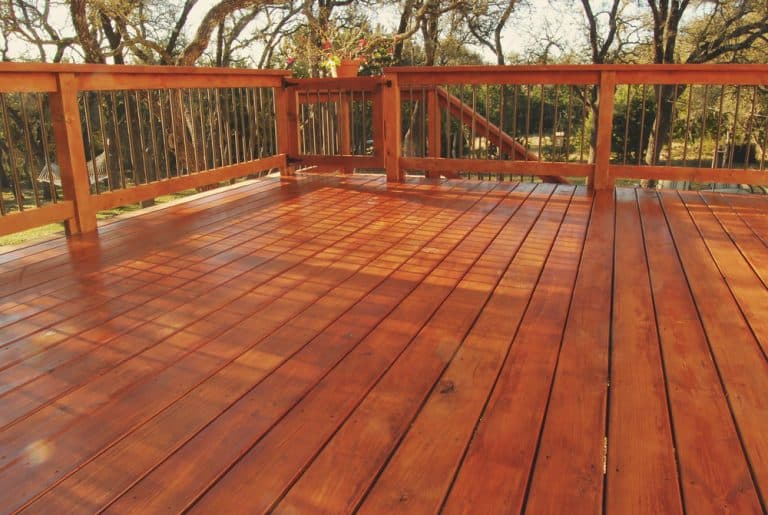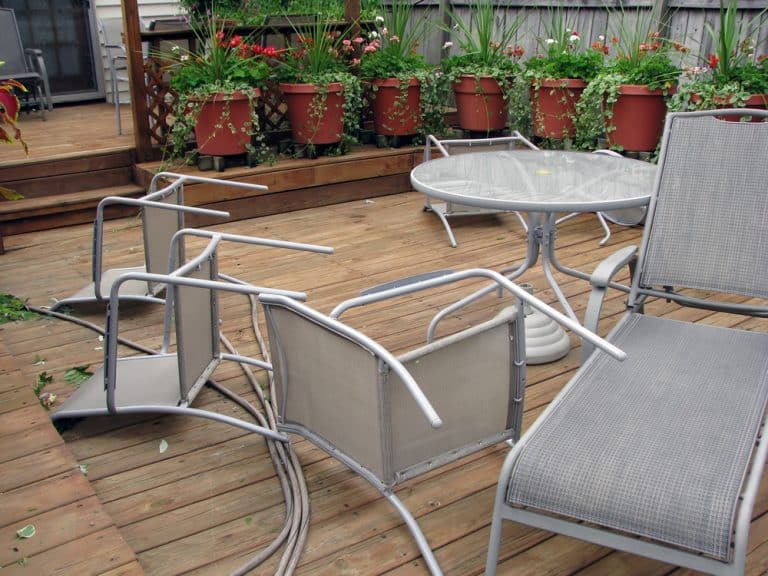10 Ways to Keep Cold Air Out
As nice as large balcony windows and doors can be, they’re a big source of heat loss in the winter. Whether through heat loss or drafts, it’s worth doing something about them to improve the energy efficiency of your home.
In this article, we’ll look at how to keep cold air from coming through windows. Of course, these solutions will work on balcony doors, too, as well as any other sliding doors.
Why Do Windows Let Cold Air In?
Numerous factors can lead to windows letting in cold air. These include:
- Old windowpanes (particular single glazing)
- Damaged seals
- Dirt
- Dropped sash
- Damaged locking mechanism
In short, windows and doors are never completely airtight. However, wear and tear can result in them being far less insulating than they were originally designed to be.
The balcony or outside area itself shouldn’t have any impact on this unless it’s completely blocking sunlight from hitting the windows. This’ll make them feel colder because they’re lacking any kind of exterior warmth.
How to Prevent Cold Air from Coming Through Windows
1. Clean the seals
The first step is to clean the seals around your windows and doors. It’s a good option for keeping cold air from coming through windows because it ensures they’ll close properly.
Start by opening the windows and running a vacuum cleaner along the seals. Then, wash with a solution of warm water and dish soap or vinegar.
2. Fit weatherstripping

Weatherstripping is basically a strip of material (usually foam) that makes the seal tighter between the window or door and its frame. Compression weatherstripping is better for swinging doors and sash windows, but foam will work on everything.
It has a self-adhesive backing, so just cut it to size and stick it down.
3. Add door sweeps
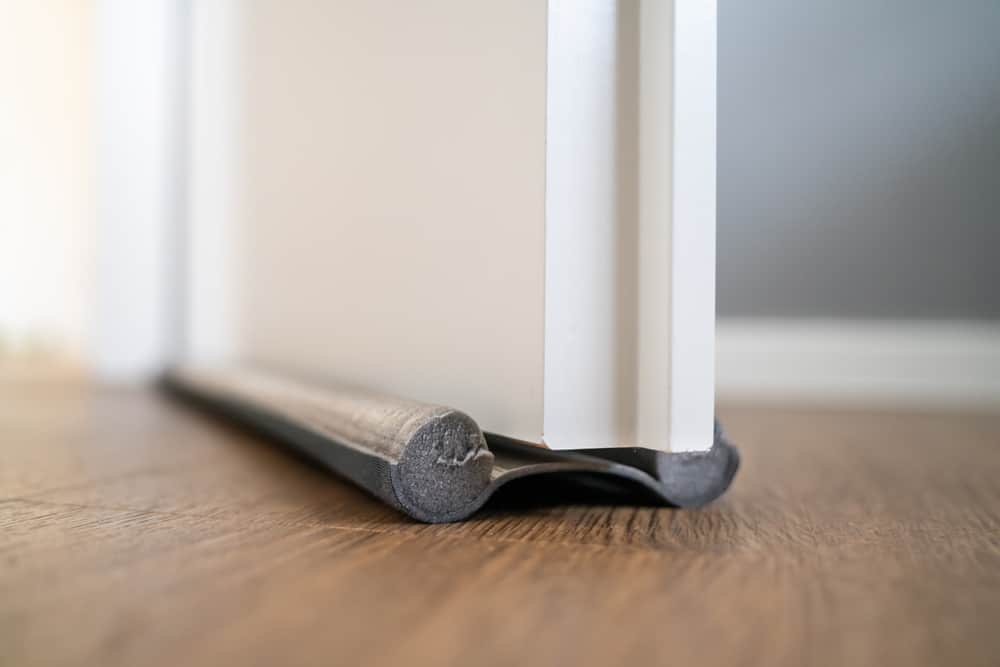
Door sweeps (or draft excluders) run along the bottom of the door to block the gap. It’s more prone to drafts that the rest of the doorframe because of fitting restrictions.
Foam sweeps are best for swinging doors while rubber is best for sliding doors (although gaps are much less of a problem for them). Alternatively, you could make your own by stuffing socks or tights with fabric and then sticking it to the door.
4. Hang curtains
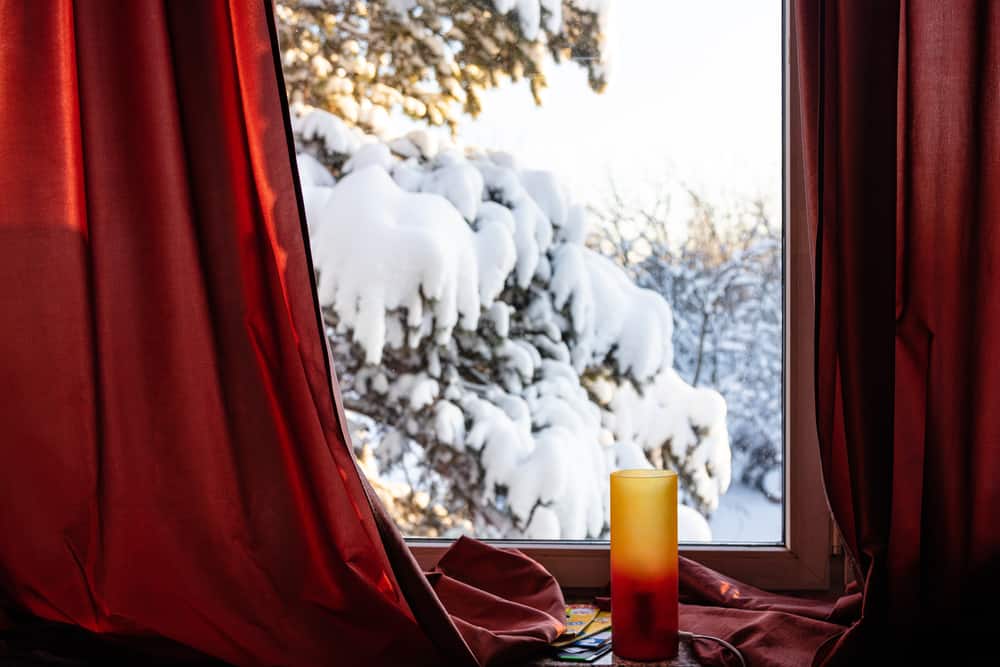
If you don’t already have curtains, hanging some works well at stopping cold air from coming in. Just as you’d sit under a blanket to insulate heat, curtains do the same job for your windows.
For maximum insulation, choose thick materials or lined curtains. Velvet drapes are one of the most effective, but any cotton or polyester curtain with a lining should be fine. Make sure they gather on the floor to exclude any drafts.
5. Add plastic sheeting
Plastic sheeting is a surprisingly good option for preventing cold air from coming through windows. Like curtains, it adds an extra layer of insulation, except it’s much closer to the windows.
You can use any plastic sheeting you can find. Polyethylene sheeting works well, but you could also use drop cloths, bubble wrap, or moving blankets.
Bear in mind this won’t look great, and opaque materials will obviously prevent light from getting into your apartment.
6. Caulk the frames
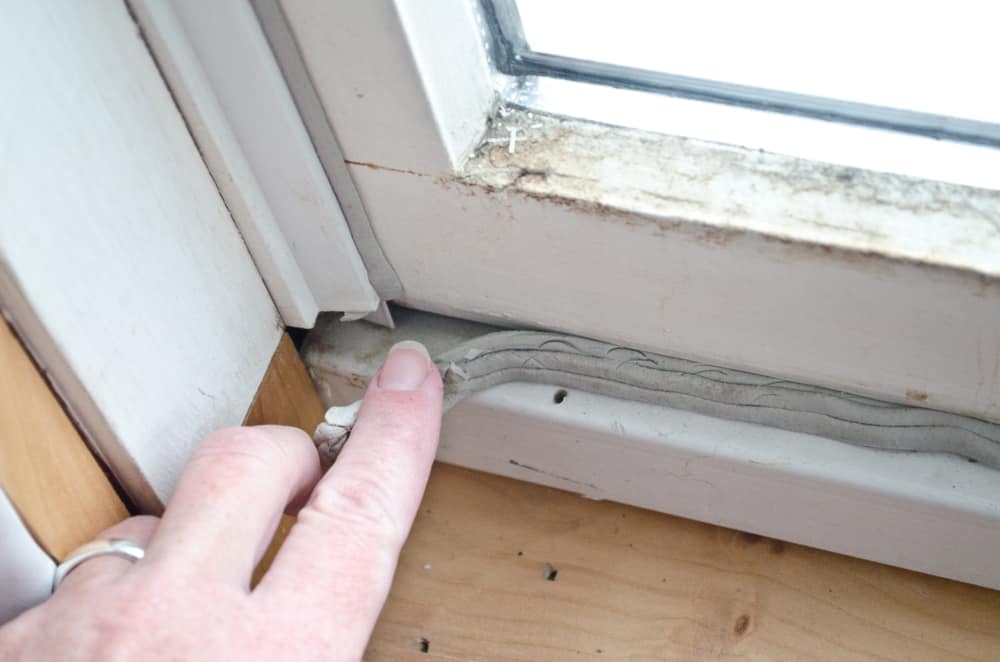
In older buildings, it’s not uncommon for door- and window frames to shift. But even in newer buildings, the insulating caulking can perish after about 5 years or so. This is a big culprit for airflow that’s pretty easy to overlook.
Luckily, repairing it is super easy. All you need is a tube of silicone sealant and a caulking gun.
Remove as much of the old caulk as possible and then run a thin strip along the exposed area. Press it into place with a knife and let it cure for a few days.
7. Use a window insulation kit
Window insulation kits usually consist of plastic sheeting and tape. Its purpose is to mimic double-glazing, making it a go-to option for those with single glazing. However, you can use it on double-glazed windows too.
The plastic sheet is heat reactive, so it shrinks into place. This is essentially the official version of the plastic sheeting tip above.
8. Stick down some tape
If you want a really low-cost solution for how to keep cold air from coming through windows, just use sticky tape. Use it to seal any visible gaps around the windows and doors. You can even seal the windows themselves if you don’t plan to open them over winter.
Although any tape will do, masking tape might be the best solution because it’s the least likely to leave residue.
9. Install shutters

Installing shutters might seem like overkill, but it’s an easy way to add another layer of insulation. If you add them on your balcony and then combine with thick curtains inside, your windows should be very well insulated. Of course, they do come with the disadvantage of blocking light.
10. Blocking doors and windows
If all else fails, physically block your doors and windows. After all, there’s no better option for how to prevent cold air from coming through windows than a physical barrier!
There are a few ways you can achieve this:
- Door snake to combat drafts
- Layering curtains and thick blinds
- Hanging duvets or blankets
- Using Styrofoam panels
- Hanging sheets of insulation foam
As you can see, these all rely on adding extra layers between the room and windows. Make sure they’re well sealed (you can use strong tape, pins, nails, etc.) and that the barrier extends past the window frame. Unsurprisingly, most of these options mean you won’t get any light in the room, but they could be taken down during the day.
Final Thoughts
Knowing how to prevent cold air from coming through windows basically involves finding the sources of the drafts and then blocking them. Hopefully, you’ve now got enough information to make your rooms much cozier in the winter.



